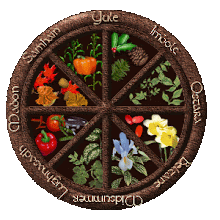I like reading up and learning about all sorts of things but find that in this day of technology books of old are suffering. I have to wait for days for a book I've ordered to come into the shop or from online suppliers. So often I find myself wandering the echoey halls of the web and trying to piece together fact from fiction. Now of course a lot of what we study and believe is called by lots fiction but the key word in what we do is faith. As such I take a lot of what I read with a pinch of faith and try and pass that on to others.
The recent study I wanted to read was about Cernunnous. I feel drawn to Him, in His many forms and am often hunting out writings, art, images etc of Him. I wanted to share some of my thoughts with you all but seem unable to put the words together in any fitting form today (a bit of a mental block with everyday madness filling the gaps). So I thought I'd post some information I found on Themystica.com and let you read it for yourselves.
Cernunnous was the Horned God of the Celts. He was associated with the hunt and fertility. Occasionally he was portrayed with serpent legs, torso of a man, a head of a bull or ram, or shown with stags wearing antlers. The name Cernunnous means horned.
He is the lord of life, death and the underworld. Being the Sun to the Goddess of the Moon as he alternates with her in ruling over life and death. With her he cooperates in continuing the cycle of life, death and rebirth, or reincarnation.
His own life is said to be circular. The Horned God is born at the winter solstice, marries with the Goddess at Beltane (May 1), and dies at the summer solstice. His death represents a sacrifice to life.
The Horned God's origin possibly dates back to Paleolithic times, as evidenced by a ritualistic cave drawing found in the Caverne des Trois Freres at Ariege, France. The picture is with one of a stag standing upright on its hind legs, or a man dressed in a stag costume performing a dance. The wearing animal clothes in rituals to secure game was practiced in Europe for thousands of years.
He was worshipped by the Romans and Gauls who portrayed him with a triple head. Sometimes the Romans depicted him with three cranes flying above his head.
Other deities associated with, or others have claimed them to be representative of, Cernunnous, the Horned God, are Herne the Hunter, a ghost of Britian; Pan, the Greek god of the woodlands; Janus, the Roman god of good beginnings with his two faces looking in opposite directions representing youth and age, and life and death; Tammuz and Damuzi, the son- lover-consorts of Ishtar and Inanna; Osiris, the Egyptian lord of the underworld; and Dionysus, the Greek god of vegetation and the vine, whose cult observed rites of dismemberment and resurrection."
The Celtic god Esus was analogous to Cernunnous. Similarly the animal of Esus was the bull. Esus was sometimes identified with Cernunnous who appears on the Gundestrup Cauldron. Supposedly Esus was also ruler of the underworld, but this did not keep his worshippers from considering him to be a god of plenty and portraying him holding a sack of coins.
Most frequently whenever Cernunnous was depicted or portrayed, he was shown as an animal, usually a stag, or surrounded by animals as he is depicted on the Gundestrup Cauldron seated in a lotus position. This was seen as appropriate as he was the god of the hunt and fertility. He was also the ruler and protector of the animal kingdom. He is often seen holding a ram-headed serpent.
In the Welsh tale "Owain" his role as a herdsman-god and a benign keeper of the forest is told. Here he summons all the animals to him through the belling of a stag. All the animals even serpents obediently came to him "as humble subjects would do to their lord."
Some feel that the honoring of Cernunnous even continued in the early Christian era. Many of the early ascetics still had pre-Christian longings for nature. To substantiate this there is the account of Saint Ciaran of Saighir. This humble man went into the wilderness to establish a cell that would eventually become a monastery. A boar came, seeing the man he was terrified, but later returned and was submissive to the man of God. Saint Ciaran considered the boar his first monk. The boar was later joined by a fox, a badger, a wolf and a stag. These animals left their liars to join the community.
There are other tales such as this one that give rise to suspicions they caused early Christian writers and artists to associate Cernunnous with Satan. Although some Christians never lost their love of nature. Saint Francis of Assisi is well known for his love of animals and birds.























No comments:
Post a Comment